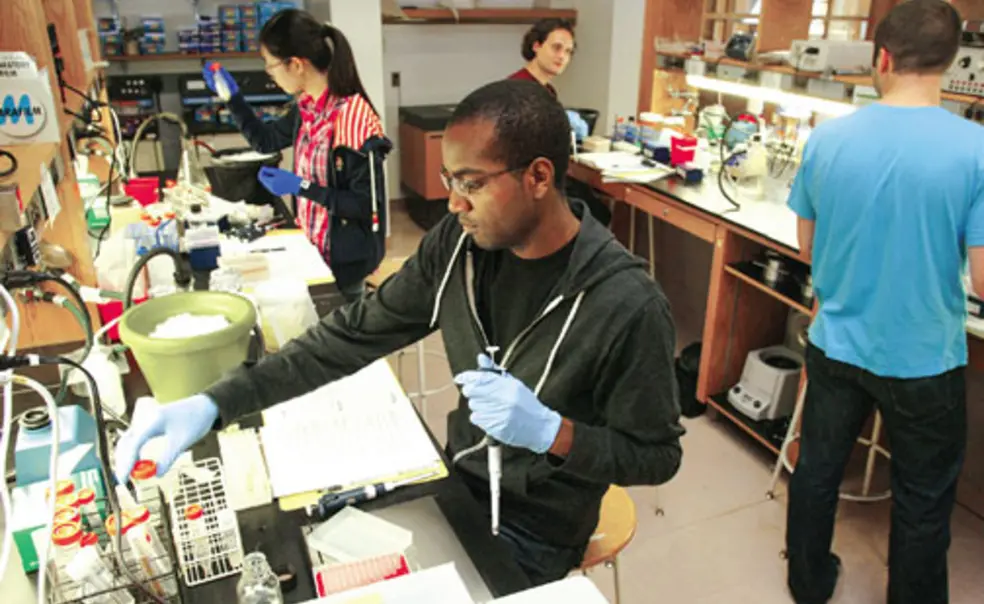A Renewed Commitment to Diversity
Until the second half of the 20th century, Princeton was a homogeneous institution — overwhelmingly white and male. But thanks to the leadership of President Bob Goheen ’40 *48 and his successors, coupled with the strong support of several generations of Princetonians, the composition of our University community has changed significantly, especially at the undergraduate level. Today our undergraduate student body is almost evenly split between men and women, and the Class of 2016, 42 percent of whom are nonwhite or multiracial, is the most diverse in Princeton’s history.
Unfortunately, progress has been much slower among graduate students, postdoctoral fellows, faculty, and administrators, due in large part to the decentralized nature of their recruitment. A single undergraduate admission process makes it possible to implement effective strategies for attracting a broadly diverse class. However, persuading scores of academic departments to act in tandem while respecting their autonomy on academic matters has proven much more difficult. A similar challenge faces the large number of administrative units, each of which is making its own hiring decisions. In 2012, for example, just three percent of doctoral candidates and one percent of postdoctoral fellows were African American; only 20 percent of full professors were female; and a mere two percent of senior staff were Hispanic. In other words, despite our best efforts, Princeton does not come close to looking like America today, let alone tomorrow, when, by 2042, if not before, demographers predict that ours will be a nation of minorities.
Our quest for greater diversity is not, of course, solely a response to shifting demographics, though the warning of President Goheen in the wake of coeducation bears repeating: “Had the University buried its head against the winds of change, it could in time have become archaic.” Rather, as I have often argued, diversity and excellence are inextricably linked. Creativity and innovation, forged, in part, by vigorous debate, are most likely to occur when the broadest possible range of perspectives are brought together. Indeed, the best way to open minds is to expose them directly to those least like themselves; to create an environment in which the most talented members of every racial, cultural, and socioeconomic grouping can engage with and learn from one another.
Ultimately, equity of opportunity — and the diversity it yields — is a fundamental principle of American democracy, as well as a matter of national self-interest. In our rapidly shrinking world, cultural sensitivity and adaptability, nurtured both inside and outside the classroom, have never been more important, just as American competitiveness demands that we utilize the talents of our entire population, not merely those who have been traditionally well represented on our campuses.
And so, in a year when nonwhite births in the United States outnumbered white ones for the first time, I convened an ad hoc committee of trustees, faculty, graduate students, and staff to develop a blueprint for creating the truly diverse community we have long aspired to be. My charge to the committee was twofold: to examine in what ways “a richly diverse community enhance[s] learning, scholarship, civic leadership, and service” and to determine how we as a University can “do a better job of attracting and retaining talented individuals from populations that have historically been under-represented.” Ably led by Brent Henry ’69, vicechair of the Board of Trustees, and Deborah Prentice, chair of the Department of Psychology, the committee has sought to address these questions by engaging more than 2,500 individuals on our campus through surveys and focus groups, organizing an academic conference to solicit expert views, and collecting a wealth of data. Among its first priorities was drafting a Statement on Diversity and Inclusion designed to make it clear that both are central, not tangential, to our educational mission. The committee has also devoted many hours to developing the kind of bold but realistic recommendations that will foster the leadership and create the tools we need to move forward resolutely.
An encouraging case study is provided by the life sciences. When the National Institutes of Health linked the renewal of critical training grants to the diversification of graduate student populations, the Department of Molecular Biology adopted several creative recruitment strategies that have dramatically increased the number of under-represented minority doctoral candidates joining us each year. Thanks to this initiative, the percentage of African Americans, Hispanics, and Native Americans in these cohorts jumped from 4 percent between 2003 and 2007 to 24 percent between 2008 and 2012, well in excess of the National Institutes of Health’s target.
I am confident that the work of the committee, whose report is now being finalized, will help us to multiply this success. And while the task ahead will not, at times, be easy, the collective benefits we reap as an institution and, ultimately, as a society will be the rich reward.














No responses yet